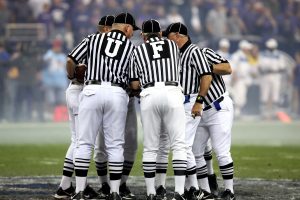Author: Steven J. Cernak
Submitting the form and documents required under the Hart-Scott-Rodino premerger notification system can be complicated. If only the initial submission must be made, however, the pain and expense can be short-lived. If, on the other hand, the parties receive a “second request” for information at the end of the thirty-day waiting period, the parties and their executives are in for months of discovery, questioning, and plenty of quality time with antitrust lawyers instead of their customers. To give themselves a chance to avoid that fate, parties should consider taking a few basic steps before and immediately after the initial HSR filing.
HSR Basics
As we discussed in prior posts, HSR requires the parties to certain large mergers and similar transactions to submit a form and certain documents to the two U.S. antitrust agencies prior to closing the transaction. If the antitrust agencies fear the transaction will cause antitrust problems, they can sue to stop it; if not, they allow the transaction to move forward. After the parties complete their submission, the agencies have thirty days to decide if they need more information to make that determination.
HSR was the first premerger notification scheme when it was passed in 1976. Since then, dozens of other jurisdictions have passed similar, but far from identical, schemes. HSR remains simpler (not simple) in two key-ways. First, the HSR form does not require any market, share, or similar information that would go into an antitrust analysis; instead, the parties must merely describe themselves and the transaction. Second, the HSR process does not require any pre-filing consultation with the agency to ensure the submission is complete; instead, the parties can just upload the submission and wait to be told if anything is missing.
That is not to say that submitting the HSR form and documents is simple. Like most tax forms, the form itself is only a few pages long but the instructions, definitions, rules, and interpretations necessary to correctly fill in the blanks run to hundreds of pages. And some of the information required can be obscure—for instance, many companies do not have ready their U.S. revenues classified by North American Industry Classification System codes. (Those of us who have been filing for decades appreciate that the FTC has simplified the form. For example, it no longer requires a base year of revenues or a list of added and deleted products since that base year.)
HSR Second Requests
Most parties submit the filing, let out a sigh of relief, and try not to think of HSR again. Usually that course of action is correct. After all, the vast majority of all HSR filings are cleared in the first thirty days. If the reviewing antitrust agency believes it needs more information to decide the transaction’s likely effects, however, it will issue a “second request” for information.
A second request is a long list of document requests and interrogatories that can take months to fulfill. In the meantime, the parties and their lawyers, executives, and expert economists will debate the meaning of all that information. At the end of the process (often about a year later), the agency will decide if it should sue to stop the transaction from closing. If the agency challenges the transaction, the parties must then decide to either abandon the transaction or spend several more months, at least, defending it in court.
An HSR Second Request—Will You Get One?
Therefore, parties to an HSR filing need to predict if their filing will be one of the minority that receive a second request. If so, they must then decide which steps, if any, to take to try to head it off.
There is no set of questions to ask that will unfailingly predict the receipt of a second request; however, a positive response to several of the following questions makes it much more likely that the reviewing agency will want more information than is contained in the initial HSR submission:
 The Antitrust Attorney Blog
The Antitrust Attorney Blog












